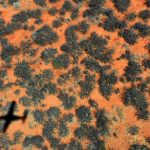Laikipia – Kenya (15.10.16)
Lying in the rain shadow of Mount Kenya (5,199m), east of the Great Rift valley, the outstanding high country region of Laikipia, although relatively unknown, is without doubt one of Africa’s most exciting wilderness and wildlife locations.

As I type this blog, an equatorial full moon bathes this vast big-sky country far and wide. I can hear the growling and grunts of an eerily close leopard as the brilliantly bright planet of Venus vies for attention in what is a balmy out-bush evening sky. I am back in Africa, well and truly re-seduced by one of my all-time favourite destinations.
When I close my eyes, the images, colours, creatures, sounds, smells and smiles of Laikipia flood past me at an African wilderness pace. Images dominated by views of the mountain and high escarpments, open-air beds under the stars, post dawn bush-breakfasts, Samburu herdsman carrying ornate spears, sundowners and a barrage of wildlife. The sheer unfolding beauty and diversity of this region will entrance any visitor immediately.

Star Bed
Sitting pretty like a 9,500km² jewel in the middle of Kenya’s considerable wilderness crown, Laikipia is enormous and magnificent. It is home to the country’s second largest collection of wildlife (after Maasai Mara), including 7,000 elephants, 350 of Kenya’s 2,000 lions, reticulated giraffe, rhino and seventy per cent of the world’s remaining Grevy zebra population. It is also one of Africa’s most remarkable natural eco-systems, with spectacular landscapes to boot.

The local tribal communities, predominantly made up of the Samburu, Meru, Kikuyu and Borana, co-exist, at this high altitude, on horizon-stretching open savannah, in woodlands, grasslands and forest, with indigenous wildlife, local farmers and tourism providers.
So successful has Laikipia’s blend of conservation been over the last thirty years, that the region has seen a wildlife population increase of fifteen per cent. This is even more remarkable when one considers that Kenya, a relatively efficient safe-guarder of wildlife, continues to experience a dwindling in animal numbers, mainly because of wilderness encroachment and poaching.

The hope is that multi-stakeholder partnerships, including local land owners, environmentalists such as the Laikipia Wildlife Forum and Kenya Wildlife Trust, the local tribal population and an ever expanding tourism market, will flourish. Employing 1,300 people (supporting 6,500 dependants), and bringing in US$3.5m in wages, tourism, with its roughly thirty camps or lodges, is an important contributor to this process.

Sosian Sundowner Deck
Indeed, without such partnerships, the future of the country’s second largest wildlife region (after Tsvaro) cannot be guaranteed.
However, I am optimistic. The combination of such friendly and passionate people, who appear hell-bent on sustaining, as well as sharing, their homeland’s landscapes, flora and fauna, bodes well for the future. Long may it last. I urge you to go.




Sabuk



Bush Breakfast

Ol Malo Helicopter


Samburu herdsmen and cattle.



Sundown spotter.













